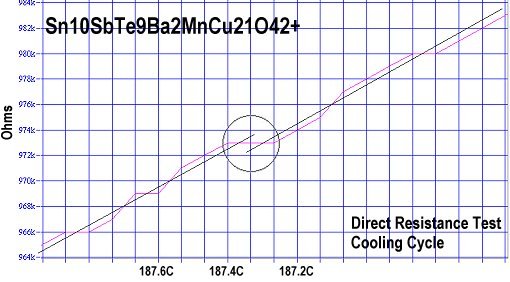
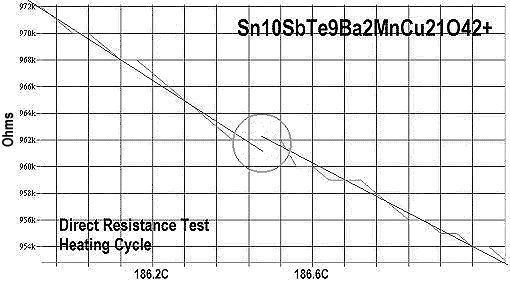


Superconductors.ORG herein reports the discovery of room-temperature superconductors number 38, 39 and 40.[1] The most synergistic combination of elements found to facilitate high-temperature superconductivity are tin, tellurium, barium, and manganese in a copper-oxide matrix. This was confirmed in February 2016 with the discovery of Sn7Te7Ba2MnCu15O30+, a superconductive compound with record Tc near 158C. Since Tc has previously been found to correlate directly with planar weight ratio (PWR), three new compounds with these same elements were synthesized using progressively higher planar weight ratios in each. The results reveal that superconductivity is still possible at temperatures as high as 187 Celsius (460K/368F), giving new meaning to the term "warm superconductor."
Initial tests in April 2016 were limited to resistance only. This was due to testing temperatures being so high they could damage the Hall-effect sensors in the magnetometer. Subsequently a miniature coil was adapted to measure magnetic susceptibility at temperatures up to 200 Celsius. Magnetization tests of the best performing of the three materials, Sn10SbTe9Ba2MnCu21O42+, confirmed that a Meissner transition is occurring near 187C. Since a coil was used, readings are in millihenries (see below graphic).
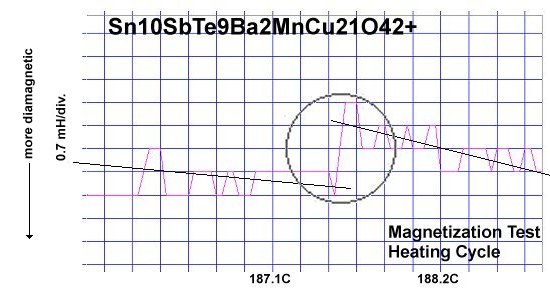

|
Confirmation of 187C superconductivity also came in the below test of Sn9SbTe8Ba2MnCu19O38+, where the non-superconductive bulk is near a Mott transition. As the Sn10SbTe9 minority phase exits a superconductive state, the bound Cooper pairs are released to flood the bulk. This triggers a momentary resistance drop due to increased electron density. To read more about Mott transients, click HERE. 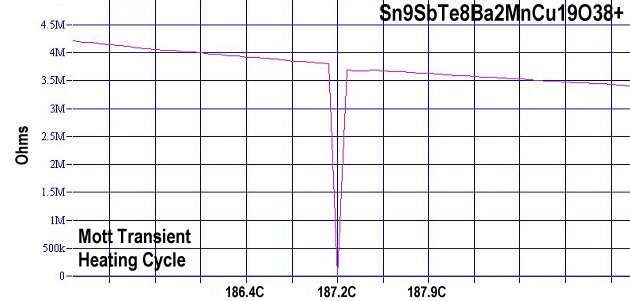
The majority phase superconductor in Sn9SbTe8Ba2MnCu19O38+ produced a Tc around 178C (shown below left). And its progenitor Sn8SbTe7Ba2MnCu17O34+ had a Tc near 167C (below right). Of the three new superconductors Sn9SbTe8 produced the strongest signal due to the bulk being on the threshold of a Mott transition. The straight lines drawn through the noise represent the average of the data points, skewing apart at Tc with a visible slope change. 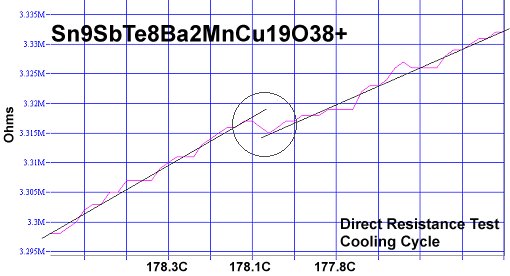
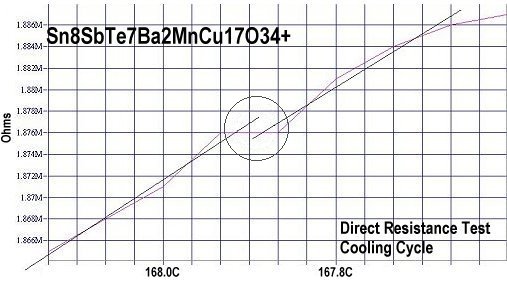
|
The dots within the below grid illustrate how Tc has advanced in the copper-oxides through correspondingly higher planar weight ratios and higher dielectric constants (K). The high Kappa compounds have transition temperatures 60-70 degrees greater than the low Kappa formulations - literally a "quantum leap" upward.
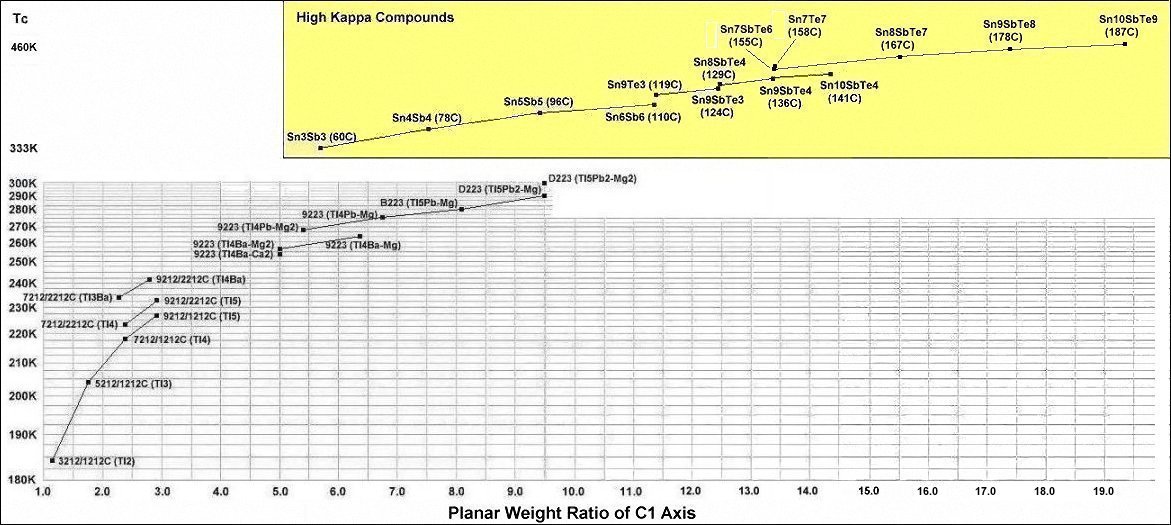
In order to maximize formation of such elongated structures, these compounds were synthesized using the layer cake method, as shown below. The pellet had approximately 100 interference layers. And, even using this layering technique, the volume fraction is low, requiring very sensitive test equipment.
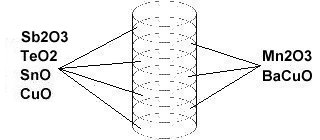
Stoichiometric ratios of the below chemicals were used for the ODD layers:
SnO 99.9% (Alfa Aesar)...and the below for the EVEN layers.
BaCuO 99.9% (Alfa Aesar) The chemical precursors were pelletized at 60,000 PSI and pre-sintered for
1 hour at 715C. The pellet was then sintered for 10 hours at 880C and annealed for 10+ hours at 500C in flowing O2.
Temperature was determined using an
Omega type "T" thermocouple and precision OP77 DC amplifier.
RESEARCH NOTE: The copper-oxides are strongly hygroscopic. All tests should be performed immediately after annealing.
RE-PUBLICATION NOTICE: Elsevier Publishing, dba Elsevier Science, as well as Morris Communications, both print and broadcast divisions, are specifically prohibited from re-publishing any part of this news story.
E. Joe Eck
© 2016 Superconductors.ORG
All rights reserved.
1. For a complete list of all 40, click HERE.
 BACK to "News" page at Superconductors.ORG
BACK to "News" page at Superconductors.ORG